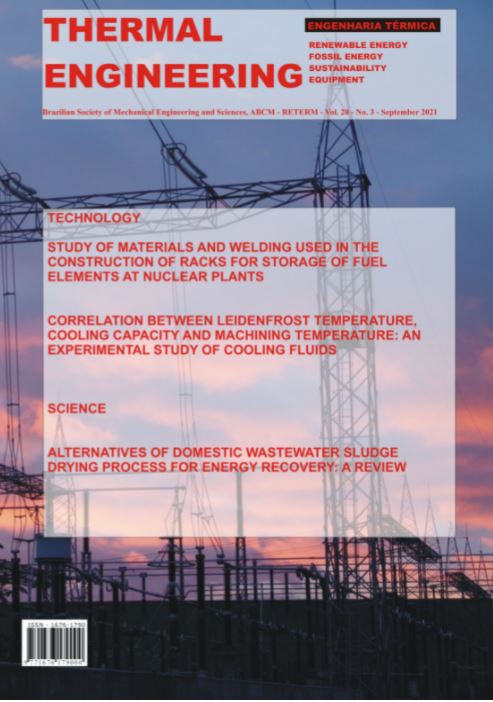EDITORIAL
DOI:
https://doi.org/10.5380/reterm.v20i3.83262Abstract
The editorial of Thermal Engineering of this issue continues the discussion on scientific research needs in vital areas in which thermal engineering has important participation. The main goal is to motivate the readers, within their specialties, to identify possible subjects for their future research.
Natural Convection is present in the most diverse applications of Thermal Engineering, such as controlling and reducing temperatures in electronic systems, reducing the thermal efficiency of cooling in machining processes by the Leidenfrost effect and even in biological systems. With the increasing technological evolution and the development of industrial automation, microelectronics, quantum computing, signal processing, mobile telephony, etc., transmission systems operate increasingly with smaller spacing and higher integration rates between components, with greater power density and heat generation. As a result, there is a growing demand for cooling systems with greater safety, reliability, and efficiency. Therefore, natural convection cooling systems are viable alternatives due to their characteristics of: (A) protection and safety of the transmission system, especially in cases of mechanical and/or electrical failures of the forced cooling system; (B) high reliability and safety of operation; (C) low maintenance costs and (D) no noise. However, due to their low thermal efficiency, such cooling systems are still limited to applications with the low power density and/or combined with forced convection cooling systems. In this sense, the natural convection area is increasingly being researched to create and enable even smaller and more robust high power density transmission systems, with greater economic feasibility (lower costs of acquisition, manufacturing, and maintenance) and exclusively refrigerated (or with minimal use of forced cooling components) by natural convection; all without reducing the efficiency or reliability of these systems. One of the main technologies for thermal optimization of cooling systems researched is the inclusion of geometric surface modifications, through fins (extended surfaces) or corrugated surfaces. The use of corrugated surfaces has been gaining more space in the academic community and industry, standing out for: (A) increasing the area of exposure to the heated surface and the transfer of energy to the circulating fluid; (B) induce changes in the flow in the vicinity of the heated surface, such as the formation of vortices, recirculations, and zones of rarefaction and stagnation; and (C) anticipate and facilitate the flow transition process for the turbulent regime. The study of natural convection – in its most diverse applications and areas of theoretical, applied, and experimental investigation – has been widely explored by Thermal Engineering, arousing more and more the academic community's interest and motivating further research in this area.
The mission of Thermal Engineering is to document the scientific progress in areas related to thermal engineering (e.g., energy, oil and renewable fuels). We are confident that we will continue to receive articles’ submissions that contribute to the progress of science.
Sílvio Aparecido Verdério Júnior
Professor of Mechanical Engineering
Downloads
Published
How to Cite
Issue
Section
License
Direitos Autorais para artigos publicados nesta revista são do autor, com direitos de primeira publicação para a revista. Em virtude da aparecerem nesta revista de acesso público, os artigos são de uso gratuito, com atribuições próprias, em aplicações educacionais e não-comerciais.



